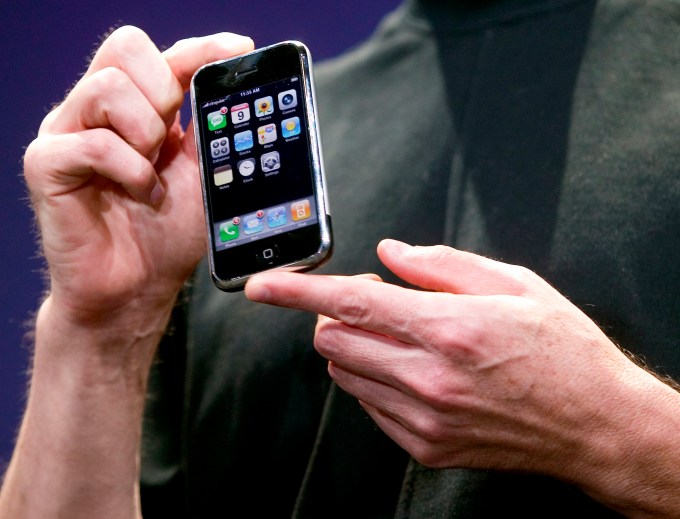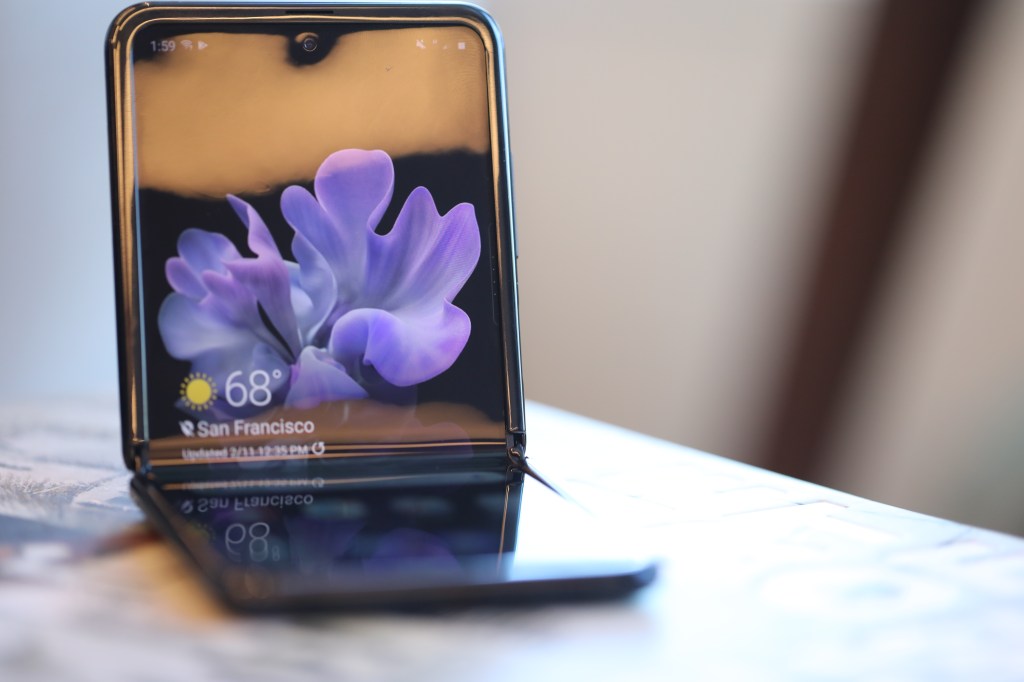As Samsung (re)unveiled its clamshell folding phone last week, I kept seeing the same question pop up amongst my social circles: why?
I was wondering the same thing myself, to be honest. I’m not sure even Samsung knows; they’d win me over by the end, but only somewhat. The halfway-folded, laptop-style “Flex Mode” allows you to place the phone on a table for hands-free video calling. That’s pretty neat, I guess. But… is that it?
The best answer to “why?” I’ve come up with so far isn’t a very satisfying one: Because they can (maybe). And because they sort of need to do something.
Let’s time-travel back to the early 2000s. Phones were weird, varied and no manufacturers really knew what was going to work. We had basic flip phones and Nokia’s indestructible bricks, but we also had phones that swiveled, slid and included chunky physical keyboards that seemed absolutely crucial. The Sidekick! LG Chocolate! BlackBerry Pearl! Most were pretty bad by today’s standards, but it was at least easy to tell one model from the next.

Then came the iPhone in 2007; a rectangular glass slab defined less by physical buttons and switches and more by the software that powered it. The device itself, a silhouette. There was hesitation to this formula, initially; the first Android phones shipped with swiveling keyboards, trackballs and various sliding pads. As iPhone sales grew, everyone else’s buttons, sliders and keyboards were boiled away as designers emulated the iPhone’s form factor. The best answer, it seemed, was a simple one.
Twelve years later, everything has become the same. Phones have become… boring. When everyone is trying to build a better rectangle, the battle becomes one of hardware specs. Which one has the fastest CPU? The best camera?
The catch, of course, is that eventually consumers stop caring. The noticeable difference from generation to generation shrinks ever smaller. You reach a point where most phones are fast enough, cameras offer sufficient resolution and the “it’s faster, and the camera is better” sales pitch no longer resonates with the vast majority of buyers. People have stopped upgrading.
When specs are no longer impressive enough to drive upgrades, gadget makers tend to get weird in the hopes that something works. Especially things that make for easy, visual pitches.
TV sales starting to plateau? I dunno, maybe the people want 3D TVs! (They didn’t.)
Getting harder and harder to make the next-gen consoles seem drastically better? I dunno, maybe people want motion controls! (They didn’t.)
Smartphones reached a point where everything sort of seems the same? I dunno, maybe make them fold?
You end up with something that looks neat, but… doesn’t really offer much. Flash, not substance. A solution in search of a problem.
Even Samsung is still clearly trying to suss out the inherent value of a folding phone. “If you’re watching YouTube and you want to leave a comment, you can watch on the top half of your screen and comment on the bottom!” a company rep declared onstage, as if that were something you couldn’t already do today on just about every device.
Samsung isn’t alone in playing with the idea of folding phones. Motorola began shipping a similar clamshell folding phone earlier this month. Like Samsung’s first attempt at a foldable, there are already questions as to its durability. And like Samsung, it comes down to the same question: “why?”
Motorola’s answer seems to be, “I dunno, nostalgia?”
In 2020, nostalgia is something of a cheat code. Everything seems so much better viewed through the foggy lens of decades past; the stresses of the time a distant memory, your past to-do list long checked. Send consumers back in time far enough, and you’ve got your in. Wanna spike cereal sales? Bam, old-school packaging! Need an easy win after your last console sorta flopped? Boom, retro console! When you need a boost, hit ’em with yesteryear.
Motorola is playing the nostalgia card right off the bat by reviving the Razr, an iconic pre-iPhone fliphone. “Wasn’t 2004 great?,” they yell. “Usher’s ‘Confessions!’ Veronica Mars! THE RAZR!”
Alas, nostalgia only helps so much. If your sugary cereal still makes people feel like crap, no one will buy a second box. If your retro console’s games aren’t actually, you know, fun, no one will buy it in the first place. (Sorry, Sony.)
Meanwhile, the current cons outweigh the pros. Current folding displays are particularly susceptible to damage; the Z Flip’s packaging warns of possible punctures if you push too hard (with your fingernail on a touchscreen!) and reportedly scratches like plastic, all while also warning users not to use screen protectors. They’re also wildly expensive — Samsung’s offering costs $1,400, while Motorola’s costs $1,500. Early surveys suggest disdain amongst potential buyers, with just 2% of responders saying they planned to buy a folding phone.
None of this is to say that folding displays and phones ultimately have no merit. Hopefully, they’ll figure out durability and will get a whole lot cheaper. Once they do, there is, perhaps, something there.
Samsung got close to something neat with its first attempt at a foldable — the aptly named Galaxy Fold, a 7.3″ tablet that, when folded, became a 4.6″ phone. Two devices in one portable (if a bit bulky) package? Useful! Sadly, the hinge on that $2,000 device allowed harmful debris to get behind the screen and its reputation quickly tanked.
And if they can make phones fold up into something small enough to fit comfortably into the impractically tiny pockets found on women’s jeans? Hell yeah! But these first clamshell takes still seem a bit chunky for that. (Alternatively, the fashion industry could just stop making women’s pockets impractically small, but that’s not really on Samsung.)
In the mean time, we’re left waiting. Waiting for manufacturers to make foldable displays cheaper. Waiting for them to figure out how to make them more durable. And, most importantly, waiting for them to figure out why phones should fold at all.






























Comment